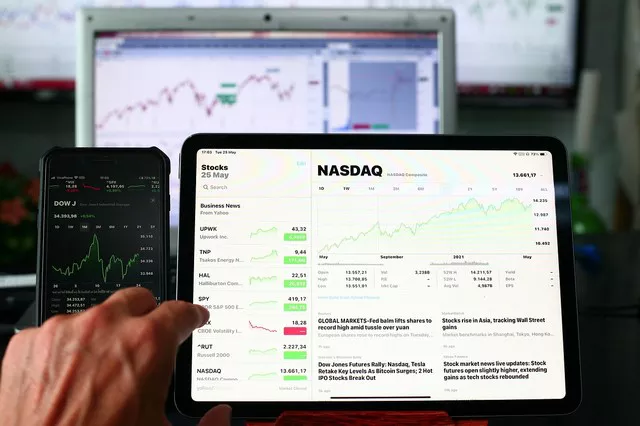In the dynamic realm of the share market, futures and options are two of the most widely used financial instruments that offer investors and traders unique avenues for risk management, speculation, and portfolio enhancement. While both futures and options share similarities as derivative contracts, they possess distinct characteristics that set them apart.
1. Defining Futures and Options
Futures and options are derivative contracts that derive their value from an underlying asset, such as stocks, commodities, or indices. These contracts provide market participants with the opportunity to speculate on price movements without directly owning the underlying asset. However, the mechanics of futures and options contracts differ fundamentally.
2. Contract Structure
At its core, a futures contract is an agreement to buy or sell an underlying asset at a predetermined price and date in the future. It obligates both parties to fulfill their contractual obligations at the specified terms. In contrast, an options contract grants the holder the right, but not the obligation, to buy or sell an underlying asset at a specific price (strike price) within a predetermined timeframe.
3. Obligation vs. Right
One of the key distinctions between futures and options lies in the level of obligation. In a futures contract, both parties are bound by a contractual obligation to fulfill the terms of the contract upon its expiration. This means that if an investor holds a long futures position, they are obligated to buy the asset, and if they hold a short position, they are obligated to sell the asset.
Conversely, options provide the holder with a right, but not a requirement, to execute the contract. This flexibility empowers options holders to choose whether to exercise the contract based on market conditions. For example, a call option holder has the right to buy the underlying asset at the strike price but is not obligated to do so if it is not advantageous.
4. Risk and Reward Profile
The risk and reward profiles of futures and options contracts differ significantly. In a futures contract, the potential for gains or losses is substantial and unlimited. Traders can experience significant profits if the market moves in their favor, but they are also exposed to considerable losses if the market moves against them.
Options contracts, on the other hand, offer a limited risk and reward profile. The maximum loss for an options holder is limited to the premium paid to acquire the contract. Conversely, the potential gains for an options holder can be substantial, particularly for call options if the market experiences a significant price movement in the desired direction.
5. Initial Investment and Leverage
Leverage is a critical aspect of both futures and options trading. Both instruments allow traders to control a larger position with a smaller upfront investment, thereby magnifying potential gains and losses. However, the degree of leverage varies between the two.
Futures contracts generally require a margin deposit, which is a fraction of the contract’s total value. This margin serves as collateral to cover potential losses. Options contracts involve the payment of a premium upfront, which is the cost of acquiring the contract. This premium represents the maximum potential loss for the options holder.
6. Flexibility in Trading Strategies
The versatility of futures and options allows traders to implement a wide range of trading strategies to suit their objectives and risk tolerance. Futures are commonly used for speculation, hedging, and portfolio diversification. Traders can go long (buy) or short (sell) futures contracts to capitalize on both bullish and bearish market trends.
Options provide even more flexibility in trading strategies. Traders can employ strategies such as covered calls, protective puts, straddles, and spreads to manage risk, generate income, or capitalize on market volatility. Options can also be used to hedge existing positions or to take advantage of specific market conditions.
7. Time Sensitivity
Another key difference between futures and options is their time sensitivity. Futures contracts have a fixed expiration date, at which point both parties are obligated to fulfill their contractual obligations. This fixed expiration can lead to heightened volatility and potential challenges in managing positions as the expiration date approaches.
Options contracts have more intricate time dynamics. They are characterized by different expiration cycles—monthly, quarterly, or weekly options—providing traders with the flexibility to choose contracts that align with their trading horizon. Additionally, options contracts have varying time values, with the value eroding as the expiration date approaches.
8. Liquidity and Market Accessibility
Both futures and options are traded on organized exchanges, providing a level of transparency, liquidity, and ease of execution. However, differences may arise in terms of liquidity and accessibility based on the specific underlying asset or market sector. Some markets may offer more active trading volumes and tighter bid-ask spreads for futures contracts, while others may exhibit stronger liquidity in options.
9. Tax Implications
Tax treatment can vary between futures and options trading, depending on the jurisdiction and local regulations. In some regions, gains from futures trading may be subject to specific tax rates, while options trading may have its own tax implications. It is crucial for traders to be aware of the tax consequences associated with each instrument and to seek professional advice as needed.
Conclusion
In summary, while futures and options are both derivative contracts that provide exposure to underlying assets without direct ownership, they differ in terms of contract structure, obligation vs. right, risk-reward profiles, leverage, trading strategies, time sensitivity, and tax implications. Understanding these differences is paramount for investors and traders to make informed decisions and effectively utilize these instruments to achieve their financial objectives.
Before engaging in futures and options trading, it is essential to conduct thorough research, gain a solid understanding of the mechanics and characteristics of each instrument, and consider factors such as risk tolerance, investment goals, and market conditions. By grasping the distinctions between futures and options, market participants can navigate the complexities of the share market with greater confidence and precision, optimizing their trading strategies and potential for success.


